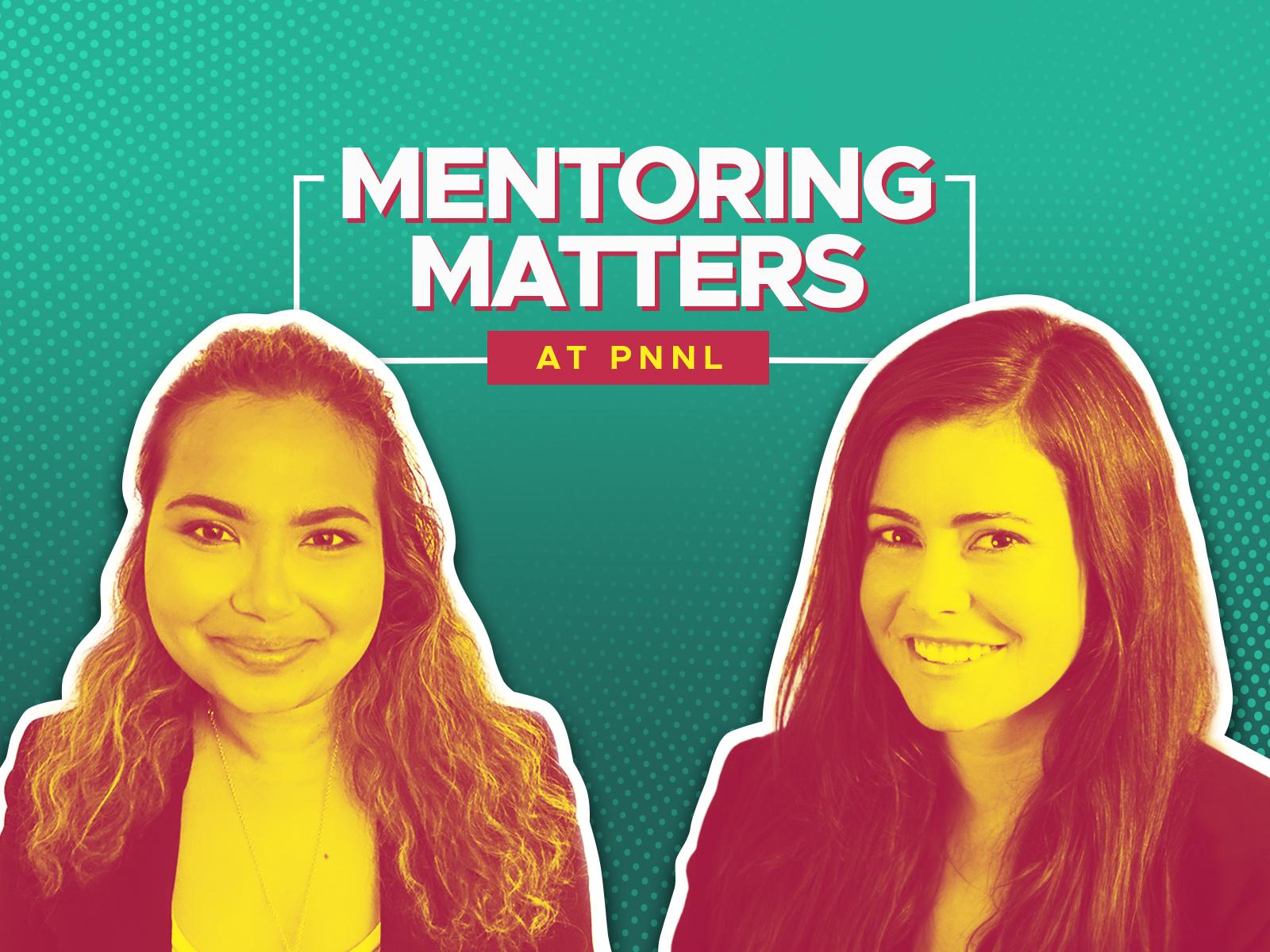Mentoring Makes a Difference
Earth Scientist Laura Fierce mentors DOE Science Graduate Student Research program awardees

Nahin Ferdousi-Rokib (left) is an awardee of the Office of Science Graduate Student Research program. She joined the program at Pacific Northwest National Laboratory with Laura Fierce (right), an Earth scientist, as her mentor.
(Composite Image by Derek Munson | Pacific Northwest National Laboratory)
Mentors in Science, technology, engineering, and math (STEM) help early career researchers build new skills, grow their confidence, and further develop their STEM identities. They demonstrate passion for research and showcase its real-world impact, while serving as collaborative partners to brainstorm ideas, offer, and gain new perspectives.
National Mentoring Month is a great time to highlight one of Pacific Northwest National Laboratory’s (PNNL’s) dedicated mentors, Laura Fierce, who has mentored graduate students in the prestigious Department of Energy (DOE) Office of Science Graduate Student Research (SCGSR) program since joining the Laboratory in 2021. She currently mentors Nahin Ferdousi-Rokib, a University of Maryland doctoral student and experimentalist.
Fierce says that mentoring allows her the unique opportunity to mutually learn from SCGSR students. “I really appreciate when my students tell me they have a different idea on how to pursue something,” she said. “It’s often a better idea and gives me a clever and new perspective.”
That is something Ferdousi-Rokib says Fierce offers her as well.
“She has broken outside of normal traditions and taken me on as an experimentalist,” said Ferdousi-Rokib. “She challenges me to dig deeper, think broader, and is supportive of the ideas I have. It’s helped me grow as a PhD student and as a scientist.”
Fierce is an Earth scientist. Her research at PNNL mainly focuses on using process-level modeling to show how aerosol particles interact with clouds and radiation.
Aerosol particles, which interact with clouds and radiation, represent a large source of uncertainty in researchers’ ability to predict changes in climate. One challenge is representing the diversity in particle size, shape, and chemical composition within large-scale models. Some aerosol particles reflect heat, helping cool the atmosphere, and others absorb heat from sunlight, causing the atmosphere to warm. Particles also differ in their ability to take up water and form cloud droplets.
Creating mentorship opportunities
“Unlike one molecule of carbon dioxide (CO2), which is more or less like every other molecule of CO2, aerosol particles are made of lots of different things and they come in different shapes, making them difficult to represent in models and quantify their impact to the climate,” said Fierce.
She connected with Nahin Ferdousi-Rokib at the 2022 American Association for Aerosol Research conference in Raleigh, North Carolina. Ferdousi-Rokib’s research focuses on how compounds that lower the surface tension of water affect aerosol water uptake. After multiple conversations, the two found an interesting intersection in their research and Ferdousi-Rokib joined the SCGSR program at PNNL with Fierce as her mentor. The SCGSR program prepares graduate students to enter careers of critical importance to the DOE Office of Science mission by providing supplemental funds and opportunities to conduct their thesis research in state-of-the-art facilities at DOE national laboratories.
Fierce introduced the idea of translating the data from laboratory experiments into a model to create a predictive framework to gain a better understanding of how surface tension impacts cloud formation and the potential consequences to the climate.
“It’s a great opportunity because in our field, it's really rare for modelers and experimentalists to intersect,” said Ferdousi-Rokib.
"We work together, we are a team"
Opening opportunities and helping expand the way mentees see the research field is engrained in Fierce because of the mentors she has had.
“When I was a postdoctoral fellow at Brookhaven, I had a mentor that helped change the way I think,” said Fierce. “My mentor, Bob McGraw, treated me like a peer and that is something I have carried on with mentees. I let them know that we work together, we are a team, and their ideas are valuable.”
After graduation, Ferdousi-Rokib is hoping to start a career in research at a national laboratory using her experiences in modeling and conducting laboratory experiments.
Fierce has also mentored prior SCGSR awardees, including Jesse Anderson from Michigan Technological University, and Payton Beeler. Beeler recently joined PNNL as a Linus Pauling Distinguished Postdoctoral Fellow.
“Collaborating with Jesse was fun. He is an experimentalist focusing on cloud droplets and the research he led in a recent paper helped connect my modeling of aerosol particles to cloud droplet formation in a cloud chamber,” said Fierce. In addition, she said Beeler was able to establish her network as an SCGSR recipient and understand what kind of role she could play at PNNL, which she highlighted in her successful application to the postdoctoral fellowship program.
“Payton is hard working and bright and I am happy to continue working with her. It’s been a privilege to be a mentor to all of my students and I am grateful for the help they offer. They’re so enthusiastic and they remind me of why I got into this area of work in the first place.”
Published: January 4, 2024